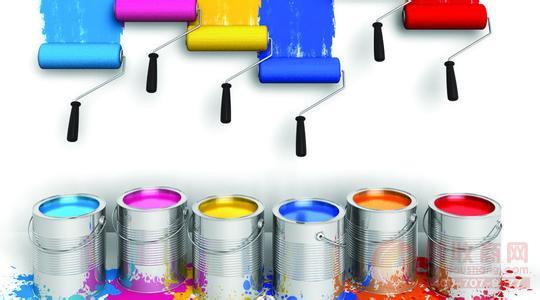How to choose the color of vinyl architectural coating technology

Since the 1990s, composite materials have substantially invaded the building products industry, including the production of doors and windows, decorative materials, and siding. The unprecedented strength and flexibility of these materials, as well as the low maintenance costs, make this type of good material widely used. This type of material also meets the important requirements of the modern construction industry for materials: “green†and environmentally friendly. While petrochemicals are used to produce such materials, they may be composed of recycled materials, so the production of such materials can be reused.
Success stories of such materials exist in the decorative market. According to a recent article in Plastics Technology, microporous PVC decorative panels have emerged and replaced wood with a 10% market share over the past decade. This article cites a 2006 study by Principia Partners Research, predicting an annual growth rate of 13% for PVC decorative panels by 2010.
The vinyl siding market, which accounts for 40% of the outdoor siding market, is also evolving. New product technologies are continually entering the siding market. Pre-processed microporous PVC siding is gradually emerging and is constantly replacing fiber cement siding to meet the requirements of some customers for higher end and siding wood.
Microporous PVC sheets have been used in the UK for 30 years, but this year they were first commercialized in the United States. Breakthroughs in coating technology have played an important role in the commercialization of microporous PVC siding.
PVC type wall panel
Fiber cement or prefabricated siding made of fiber composites and polymeric materials, possibly combined with vinyl and aluminum siding, makes vinyl and aluminum siding easy Maintenance features and the appearance of wooden products. The production of the product includes the use of fiber-free materials such as Portland cement or polymers blended with fibers to obtain a durable product that is less expensive than solid wood or injection molded polypropylene siding.
Fiber materials incorporated into these composites must be protected because of their high quality polishing action. A primer or sealer is used to minimize moisture penetration and allow the siding surface to be used in topcoat applications.
Typically, the surface of the fiber composite siding material is covered by a waterborne primer or topcoat system. These forced dry, self-crosslinking coatings provide durability and block resistance and maintain a polished outer surface for many years of use.
Wall siding materials made from extruded microporous PVC are emerging and are a new alternative to fiber cement siding and cedar lapboard. Microporous PVC materials are factory-processable and require no maintenance while achieving an aesthetic appearance similar to cedar materials. Another advantage of microporous PVC materials is that they do not degrade due to exposure to moisture and microorganisms. However, microporous PVC materials must be protected from sunlight and receive excessive heat to prevent the material from deforming after installation for the above reasons. Since the color of the black paint absorbs the heat of the sunlight, causing significant expansion of the plastic, new paint technology needs to be developed to avoid the above problems.
Polyurethane and its composites
One of the most important types of coatings used in today's composites is polyurethane enamel, which continuously sets new benchmarks for the appearance and durability of materials. Two-component polyurethane coating systems provide excellent hardness, abrasion resistance, color and gloss retention for many materials in a single route. The durability of two-component polyurethane coatings is determined by their crosslink density, while the crosslink density also gives the composites excellent color depth and distinctive surface finish.
At the same time, polyurethane coating systems can also make materials environmentally compatible. Some polyurethane enamels have VOC emissions below 2.8 lbs/gal and do not contain hazardous lead and chromate. These coatings can also have other significant advantages depending on the particular polyurethane coating formulation. For example, some polyurethanes have a high solid content (59% by volume), and the single channel of the paint applicator using these coatings has a higher film forming performance than conventional urethane rubber, resulting in higher throughput.
These coatings tend to have excellent flow properties, resulting in good transfer efficiency and leveling of the material. In addition, most polyurethane coatings can be applied by conventional, airless, gas-assisted, airless and high-pressure technologies, so they can be easily applied to many finishing lines.
Polyurethane progress
Until recently, polyurethane coating systems have only provided light-colored coatings for microporous PVC materials because light colors tend to reflect rather than absorb solar heat. Considering heat absorption, deeper color coatings can exacerbate the bending deformation of vinyl siding exposed to sunlight. This is an obstacle for building product manufacturers to attract today's homeowners, as homeowners demand deeper and more saturated colors, especially for high-end customer homes and historic buildings.
A new generation of polyurethane topcoats with low VOC values ​​provides a corresponding solution. This new topcoat has a heat-repellent character that allows vinyl siding, blinds, windows, decorative doors and patio doors to be coated with popular darker-colored paints while avoiding bending deformation of vinyl products. The deposition of heat.
The coating system consists of a two-component polyurethane enamel that can be applied directly to the surface of the substrate. This self-crosslinking coating can be used at high speed in the factory and has a low curing temperature. In addition to its durability and blocking resistance, the coating contains no HaPs and contains UV-stabilized, non-fading pigments in the formulation. It also meets or exceeds the requirements of aSTMD3679-05 for vinyl siding.
Dust Catcher Combo,Laser Dust Catcher Combo,Laser Level Tools,Laser Level Drill Dust Catcher
SHAOXING SUNWAY TOOLS & HARDWARE IMPORT & EXPORT CO.,LTD , https://www.sunwaytools.com